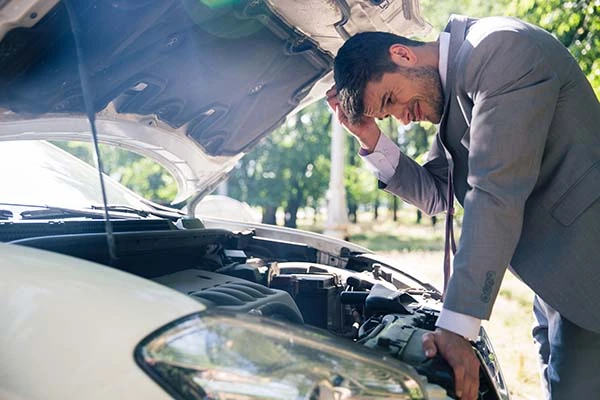A faulty fuel pressure regulator can cause different kinds of issues. First and foremost, it causes problems with the engine. But you can easily see for yourself if the regulator needs to be replaced. I’ll teach you how to test fuel pressure regulator and what to do if you notice signs that it needs to be replaced. The methods you can use to test the regulator are straightforward and simple. Simply follow my advice, and you will avoid frequent repairs at the mechanics.
What Is a Fuel Pressure Regulator?
Maintaining constant pressure is possible with a fuel pressure regulator. It enables the car’s system of fuel delivery to function. It is a device that controls how much fuel pressure gets supplied to the injectors on the engine. When vehicles are idle, the fuel pressure regulator is open, which allows the fuel to end up back in the tank.
The regulator diaphragm shuts when the engine is producing a higher vacuum under pressure, increasing the amount of fuel that can be delivered to injectors while keeping a constant pressure. Pressure regulators are generally found at the fuel tank or the end of the fuel rail.
What Are the Signs of a Faulty Fuel Pressure Regulator?
Fuel pressure regulators can cause a variety of problems. Generally, when the regulators are not working properly they can’t hold pressure adequately which leads to less fuel being supplied to the engine. The obvious end result will be low pressure. The other common thing that happens when the fuel pressure regulators are faulty is that they get stuck or clogged, so the pressure that builds up is overwhelming. In other words, too much fuel will get delivered to injectors.
So, what causes these issues? Most commonly, you will find a worn-out valve or spring, a diaphragm that is leaking, or not enough vacuum to the fuel pressure regulators.
You can notice the sign of a faulty pressure regulator on time. The common signs that indicate that a spark plug is bad apply to the fuel pressure regulator as well. These signs include:
- Loss in acceleration,
- Having a hard time starting the engine,
- Misfiring,
- Hesitation,
- Fuel leaking,
- Black smoke coming from the exhaust pipe,
- A vacuum hose becomes filled with gasoline,
- Drop in mileage.
These issues can also indicate that other components have failed or are worn out, such as the fuel pump and the fuel filter. If you want to make sure that the fuel pressure regulators are the real problem, you have to check their performance.

How to Test Fuel Pressure Regulator? What Methods Can You Use?
There are a few simple and straightforward tests that can help you check the performance of your pressure regulator. The only piece of equipment that will be required is a gauge. You can get a cheap gauge online or at the nearest hardware store.
Another thing that would help you test the fuel pressure regulator is your vehicle’s repair manual. Whether you have a new model or a used car, you should have a manual. They usually include details about the fuel system and other systems and how you can check their function.
I will first demonstrate how to check for any leaks, which is one of the most common reasons the device malfunctions. Then, I’ll demonstrate the test you can use for the performance of the device. Follow my step-by-step instructions.
Steps for Checking if There Are Any Fuel Leaks
You need to make sure that there aren’t any leaks first. Before you begin testing the regulators, see whether all the components are working properly. Follow this step-by-step process.
How to Check Whether Your Fuel Pressure Regulators Are Working?
You should have a look at your manual for any specific details when conducting the test on the fuel pressure regulators. For standard regulators, you can follow the instructions below:
- Step 1 – Find the Schrader valve. On the vehicle’s fuel rail you will find the test or Schrader valve. It is part of the fuel injection system. The Schrader valve looks almost the same as the air valve found on a car tire.
- Step 2 – Take the pressure gauge and connect it to the test port or your Schrader valve. In case your vehicle doesn’t possess this kind of valve, I recommend consulting the manual for your vehicle. Find the appropriate way to connect the gauge and the system.
- Step 3 – Search for the specification of your vehicle’s fuel system pressure. The number can be found in the car’s manual.
- Step 4 – Start your engine and leave it idle for a couple of seconds. Then turn it off.
- Step 5 – Keep an eye on the gauge while the engine is running but also when it gets shut off. The fuel pressure needs to remain within specifications while the engine is running but also after it has been turned off. For five minutes, the pressure needs to hold during the time the engine is off.
- Step 6 – Write down the reading of the gauge.
- Step 7 – Then, the ignition key should be turned on (but avoid starting your engine) for five seconds. After this, it should be turned off. This process must be repeated a couple of times so as to ensure that the pressure stays consistent. In case it is not consistent, the pressure regulator could be sticking.
- Step 8 – At the end, make comparisons between the reading you wrote down and the specifications in the manual.
What Is the Fuel Pressure Gauge Reading Telling You?
When you compare the reading with the specifications, you’ll realize where the problem lies. In case the specifications indicate a higher number than your reading, the most probable issues are: a fuel injector leaking, a worn-out fuel pump, a clogged fuel filter, a faulty anti-drain valve, or a bad fuel pressure regulator.
Your anti-drain valve and the injector could be leaking if the pressure drops quickly after you shut the engine off. Additionally, in case you find that the pressure is low but you haven’t recently changed the filter, I recommend that you replace it and run the test one more time. Replacing a regulator is as easy as replacing a valve stem. The pressure should not be low after you get a new one. However, if the situation doesn’t change, try to test for maximum pressure.
The last thing that could happen is that the number from your reading is a lot higher than the specifications. In this case, the fuel pressure regulators are faulty only when your vacuum line isn’t working properly.

Do You Have to Replace the Fuel Pressure Regulators? Follow Our Tips
You can trust your mechanic to replace the regulator, but you can do it yourself. If you can change a tail light on your own, you will be able to do this as well. I have a couple of tips that will help you:
- Your primary goal should be to obtain new gaskets and bolts when purchasing a brand-new regulator.
- It’s very rare that pressure regulators fail. Like a car thermostat, they are made to last long. I would recommend that you always first check the vacuum line before replacing anything. There is a higher probability that the issue is caused by the fuel filter or fuel pump.
- Use the appropriate safety equipment when dealing with various fuel types.
- When you have to disconnect the car battery, follow the manual for your vehicle.
- When changing the fuel pressure regulators, it is advised that the vacuum hose and fuel line hose clamps also be changed.
FAQ
Test Your Fuel Pressure Regulators and Ensure the Vehicle Is Running Smoothly
I would advise you to cautiously inspect and run a test on your fuel pressure regulators with a fuel pressure gauge. Note down the numbers and check whether they match the specifications from the vehicle’s repair manual. This is of utmost importance since a faulty fuel pressure regulator can lead to issues with starting the car, accelerating, and fuel that is leaking. In case the regulator fails while you are driving, it can lead to accidents. Make sure you keep an eye on the fuel pressure regulator’s condition.








